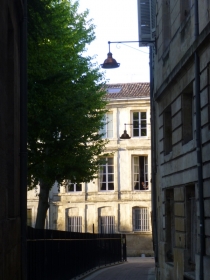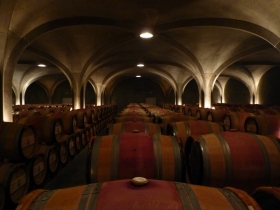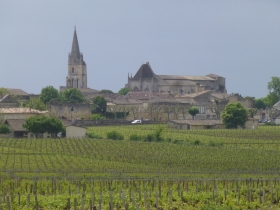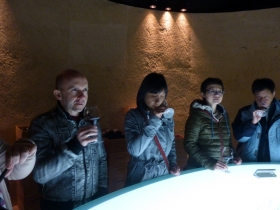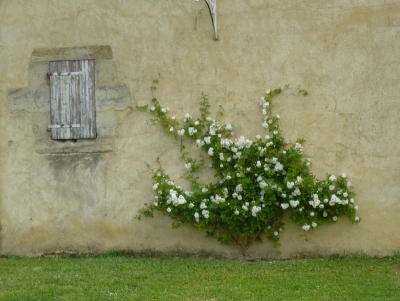Bordeaux is a wonderful city, with plenty of lovely looking shops and a limitless number of eating options. And with the most significant wine AOCs scattered around it like spokes on a wheel (Graves/Sauternes to the south, St Emilion/Pomerol to the east and Medoc to the west) there couldn’t really be a better base for a wine tour of the region.
If you’ve read about our other wine trips, you’ll know the general drill; it’s good to find an organised visit or two, as that’s how you’ll learn about the wines and taste some great specimens, it’s better still to hunt out a few little independent makers whose target market are locals rather than tourists.
However, there were three little letters that kept popping up in Bordeaux that put a bit of a fly in the ointment: RDV. Which stands for rendez-vous. Which means that most of the winemakers want visitors to make an appointment to visit their vineyard. Naturalement! After all, if they allowed you to just show up at any time between 9 and 5 you might be left with the sad impression that they were, pffft, trying to sell wine or something! Oddly enough this doesn’t seem to be an issue in the Loire… the Rhone valley… in Alsace… or even in Champagne. Yes, you could be mistaken for thinking the Bordeaux region is a bit up itself.
Equally, you could be thinking that I’m a bit up myself. But just cogitate a moment: a day out touring and tasting wine, you might want to stop at 4 vineyards, spending anywhere between twenty minutes and an hour at each. Somewhere in there you’ll need to find lunch (no easy feat in rural France), oh, and maybe you pass a beautiful chateau or a bucolic village with a fascinating church to explore. Basically, you’re meant to be on holiday. But pre-booking 4 vineyards for, let’s say, 10:30… 11:45… 14:30… 16:00… and you’ve got yourself a pretty damn regimented day. Stop to photograph a pair of goats on a tractor and your whole schedule is out the window.
Happily, the wodge of brochures we got from the Tourist Information showed that about 20% of the winemakers will greet visitors without an RDV, and we were more than happy to give our time (and Euros) to them. We did strike a balance, and made one appointment each day at recommended places where we could take a proper tour and try the wines of a more famous house. These were all good, so I’d happily recommend on to you: Chateau Girauld in Sauternes, Chateau Soutard in St Emilion and Chateau Gruaurd Larose in St Julien (Medoc). You pay at all three of these for the tour and tasting, but frankly unless you’ve got a big budget you won’t be buying many bottles from them anyway. E82 for the most reasonable bottle of Gruaurd Larose grand cru. These are learning experiences, and cooing-at-lovely-chateaux experiences.
Still and all, my favourite visits are those independent winemakers who welcome us to their less grand operations. There was a nice chap in Sauternes who paused in his DIY activities, renovating his centuries old farmhouse, to dust off his hands and introduce us to his beautiful sweet wines aged in (sacred bleu!) acacia wood or American oak barrels, rather than the traditional French oak. In the Medoc we met a fellow who seemed dispiritingly dour at first, but turned out to just be French, and was more than happy to try and answer our questions. He even made a SatNav joke, that I embarrassingly failed to get. I bought lots of his fantastic wine instead (grand cru Bordeaux for £12!). Domaine De La Gauche and Chateau Biston-Brillette respectively, if’n you’re interested.
Bordeaux itself is worth a longer mention before I finish. From online and guidebook descriptions, I thought it would be fairly ho-hum. But it’s not. It may well be lacking in world-class unique attractions, no Sagrada Familia or Collosseum, but it is just a very handsome city, awash with stylish shopping and delicious looking places to eat or drink. It felt very liveable, and I’d like to have had a couple of days just moochin’ around it. Bearing in mind the weather was crap for most of our visit and this is high praise indeed.
Bordeaux Wines
Here’s where I show off the soupcon of knowledge I gleaned on our trip to Bordeaux.
Apart from Sauternes, the renowned wines of Bordeaux are all red. But what an exception Sauternes is! The most famous dessert wines in the world, you don’t have to pay £500+ for a bottle of Chateau d’Yquem to find out why; we found lovely ones for under £15. Made with the semillon grape, usually with some sauvignon blanc added, their sweetness and funky complexity come from botrytis – the noble rot which affects the grapes naturally and dries them out on the vine during the mists of autumn. Sauternes has a perfect micro-climate for this, and semillon is the grape variety that holds up best under the rot. Barsac, very nearby, produces wines just as lovely, perhaps a bit less powerful, and less expensive.
The dry white wines of Bordeaux are just about okay, usually sauvignon blancs and at least of higher quality than the pub plonk back home.
The red wines of Bordeaux use a lot of Cabernet Sauvignon and Merlot. In St Emilion, Pomerol and Graves the Merlot is dominant (wines might be 70% to 100% merlot) and so more fruity. In Medoc the cab is more often dominant, often 60% and often in combination with other oddments of Malbec or Cabernet Franc. This brings out more leathery, herbal or earthy flavours. But when I say fruity, don’t for a minute think it will be like drinking the grown-up Ribena that you might get if you ask for a Chilean Merlot at your local Pizza Express. All of the “premier” wines here are aged in oak, often over a year, and so they have a tannic and woody complexity that balances the fruits. These are also the wines that are best at least 5 years old and can keep for much longer. If you like it simpler, look for “second” wines. Every chateau (Bordeaux-ese for winemaker) produces a premier wine with their best vines, which is oaked and pricey, and a second wine from their younger vines, which is usually unoaked and cheaper.
Finally, it’s really well worth noting this point: many Bordeaux reds are meant to be drunk with food, and go instantly from quite difficult to immensely delicious when you do. And that’s it. We learned all sorts of interesting stuff about pumping over and pressed wines, but I’ll leave that for you to discover for yourself!


